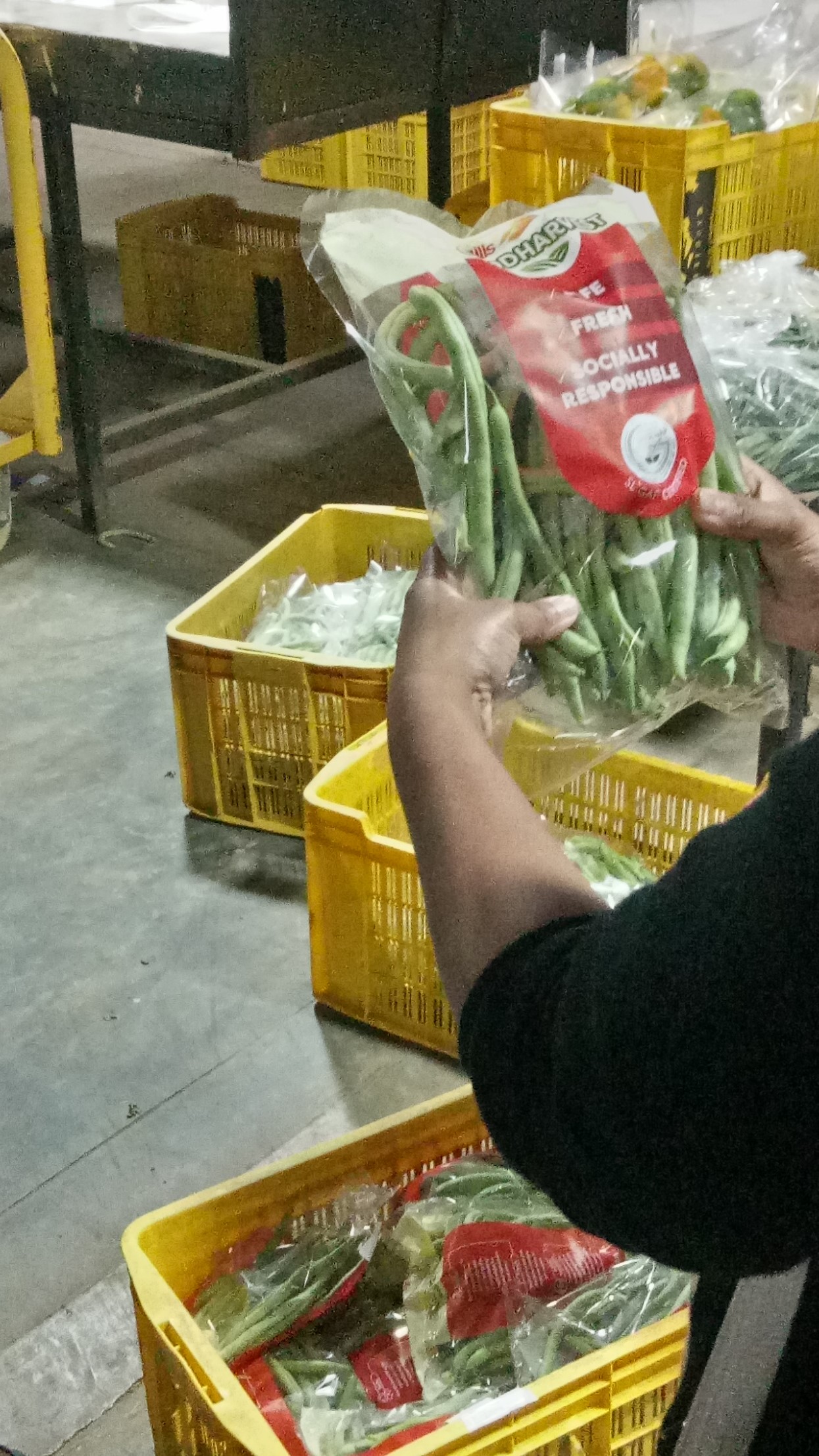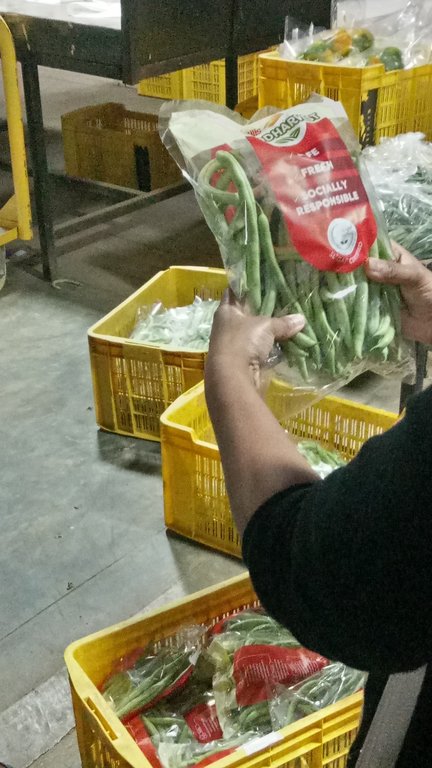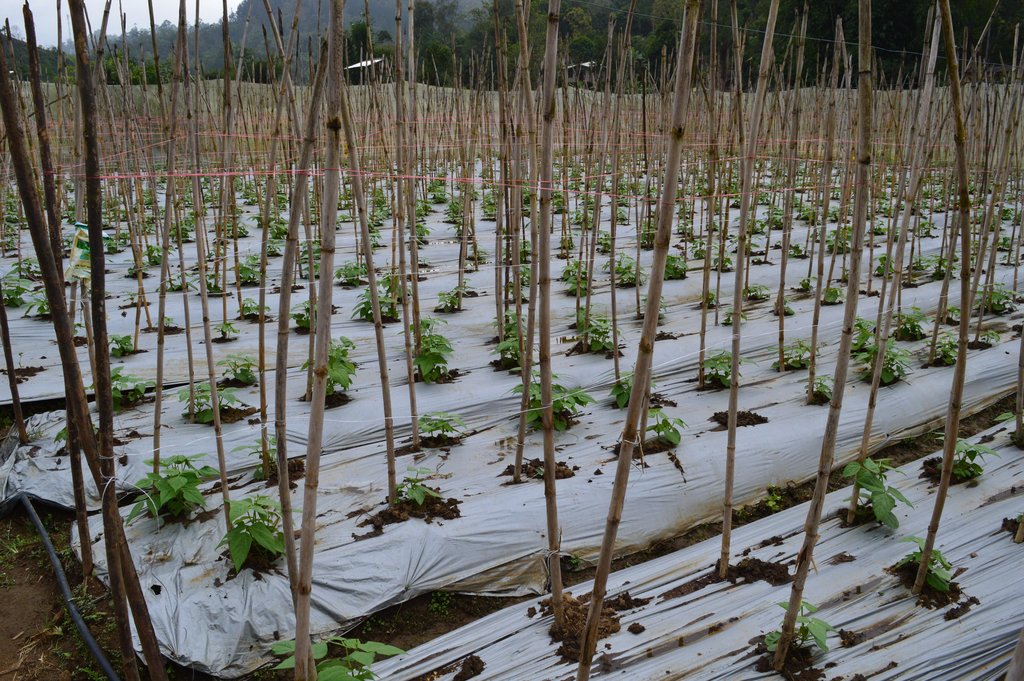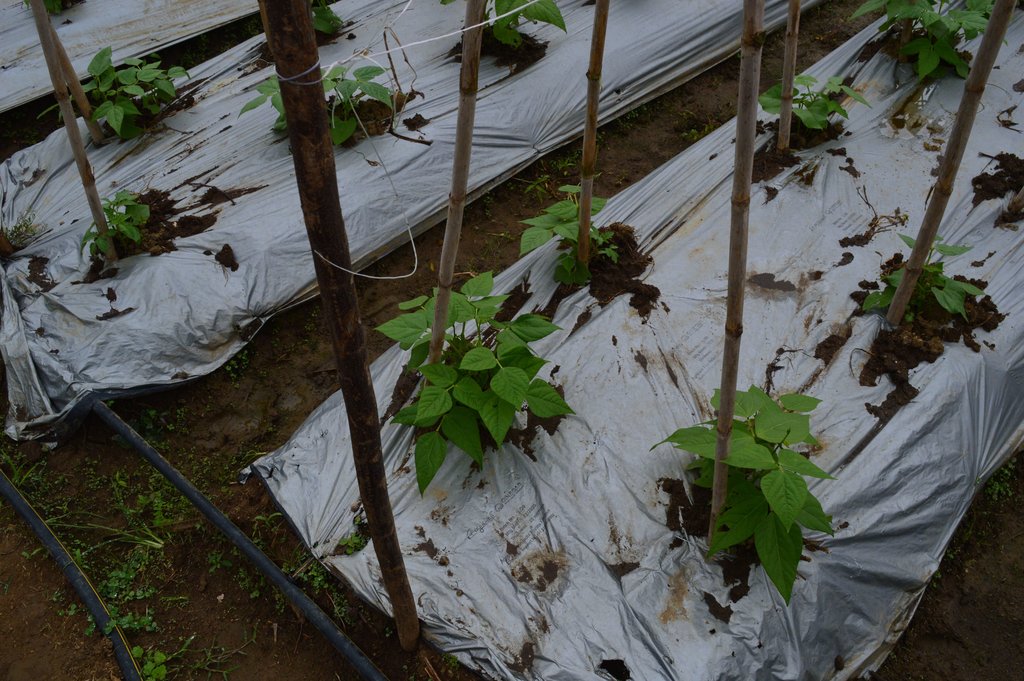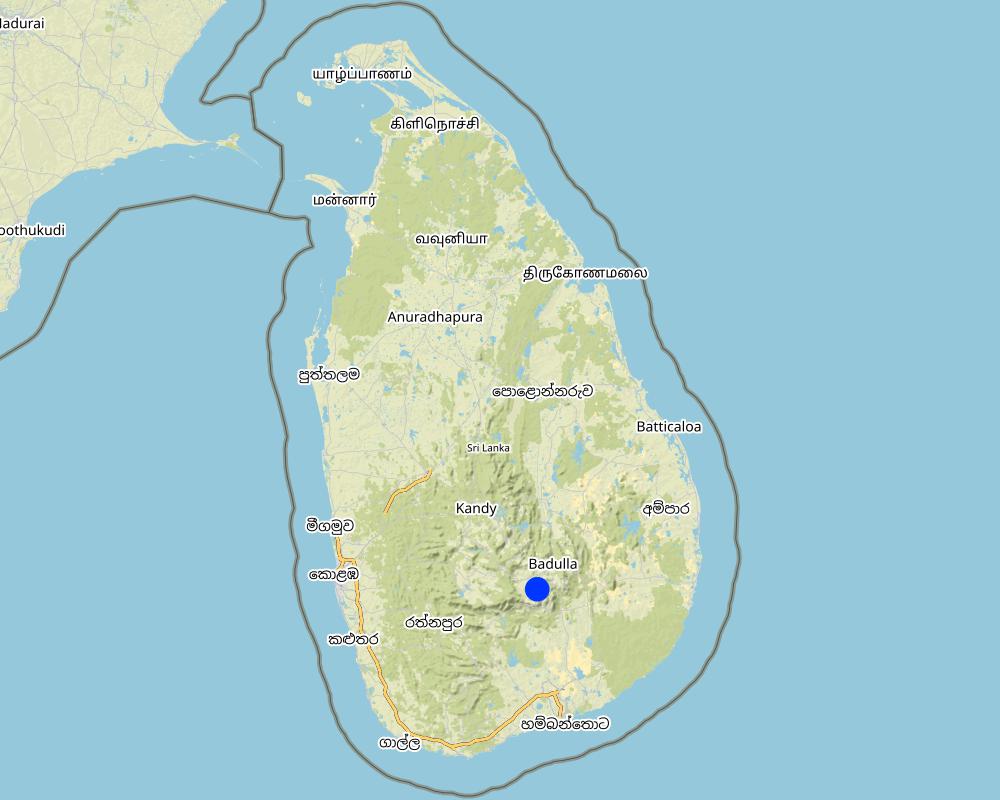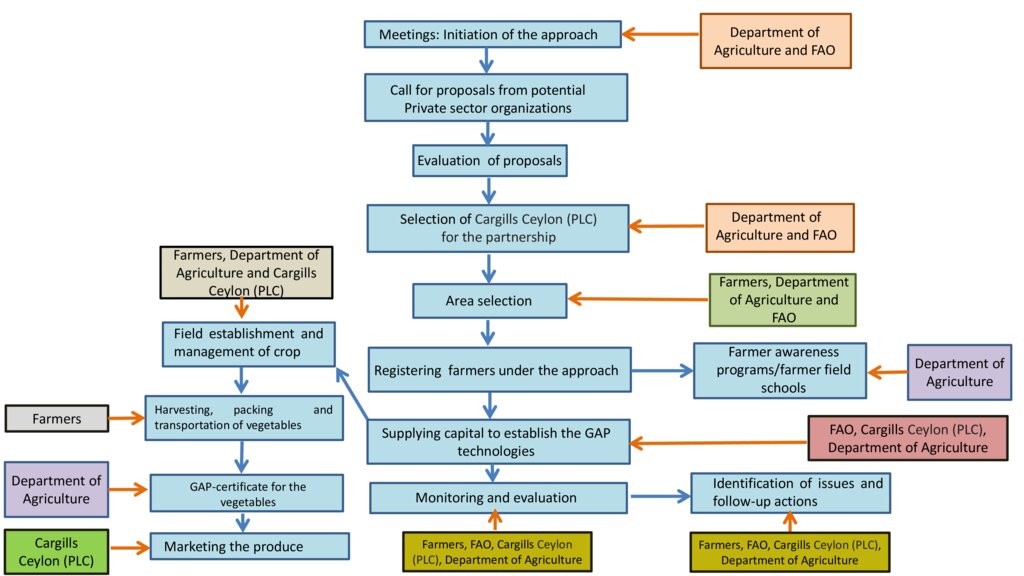Private-public partnership to promote Sustainable Land Management and Good Agricultural Practices among vegetable growers [Sri Lanka]
- Creación:
- Actualización:
- Compilador: Head Soil Science
- Editor: –
- Revisor: William Critchley
GAP Program
approaches_6229 - Sri Lanka
- Resumen completo en PDF
- Resumen completo en PDF para imprimir
- Resumen completo en el navegador
- Resumen completo (sin formato)
- Private-public partnership to promote Sustainable Land Management and Good Agricultural Practices among vegetable growers: 2 de mayo de 2022 (inactive)
- Private-public partnership to promote Sustainable Land Management and Good Agricultural Practices among vegetable growers: 21 de agosto de 2024 (public)
Visualizar secciones
Expandir todo Colapsar todos1. Información general
1.2 Detalles de contacto de las personas de referencia e instituciones involucradas en la evaluación y la documentación del Enfoque
Persona(s) de referencia clave/s
Usuario de la tierra:
Leelarathna Herath Mudiyanselage
+94 713586312
Ketakela, Ambegoda, Bandarawela
Sri Lanka
Especialista MST:
Karunathilaka D.L. Manoj
+9477 3992261
manoj.ka@cargillsceylon.com
Cargills (Ceylon) PLC
40, York Street, Colombo
Sri Lanka
Especialista MST:
Jayaweera Tharindu
+94713586312
tmjanusha@gmail.com
Department of Agriculture, Sri Lanka
Agrarian Service Centre, Bandarawela
Sri Lanka
Especialista MST:
Gunasena Nimal
+94714490338
Nimal.Gunasena@fao.org
Food and Agriculture Organization of United Nations
202, Bauddhaloka Mawatha, Colombo 00700
Sri Lanka
Usuario de la tierra:
Bandara K.M.S.J Jayasiri
+94741066961
No. 178, Ketakela, Ambegoda, Bandarawela
Sri Lanka
co-compiler:
Attanayake Chammi
(+)94 71 147 2288
chammiatt@agri.pdn.ac.lk / chammiattanayake@gmail.com
Department of Soil Science, Faculty of Agriculture, University of Peradeniya
Peradeniya, Sri Lanka
Sri Lanka
co-compiler:
Nombre del proyecto que facilitó la documentación/ evaluación del Enfoque (si fuera relevante)
Rehabilitation of Degraded Agricultural Lands in Kandy, Badulla and Nuwara Eliya Districts in the Central Highlands of Sri LankaNombre de la(s) institución(es) que facilitaron la documentación/ evaluación del Enfoque si fuera relevante)
Food and Agriculture Organization of the United Nations (FAO) - ItaliaNombre de la(s) institución(es) que facilitaron la documentación/ evaluación del Enfoque si fuera relevante)
Faculty of Agriculture, University of Peradeniya, Sri Lanka (AGRI.PDN) - Sri LankaNombre de la(s) institución(es) que facilitaron la documentación/ evaluación del Enfoque si fuera relevante)
Department of Agriculture, Sri Lanka (DOA) - Sri LankaNombre de la(s) institución(es) que facilitaron la documentación/ evaluación del Enfoque si fuera relevante)
Cargills (Ceylon) PLC (Cargills) - Sri Lanka1.3 Condiciones referidas al uso de datos documentados mediante WOCAT
¿Cuándo se compilaron los datos (en el campo)?
24/02/2022
El compilador y la/s persona(s) de referencia claves aceptan las condiciones acerca del uso de los datos documentados mediante WOCAT :
Sí
2. Descripción del Enfoque MST
2.1 Breve descripción del Enfoque
A private-public partnership overcomes constraints that vegetable farmers encounter when adopting novel SLM technologies and Good Agricultural Practices. The private sector helps with marketing, value addition, certification, and financial support. The public sector fulfils farmer training needs through (for example) Farmer Field Schools using digital platforms.
2.2 Descripción detallada del Enfoque MST
Descripción detallada del Enfoque MST:
This approach was implemented in vegetable growing lands in hilly and rolling terrain, where the average annual rainfall is relatively high: Wet zone (>2500 mm) Intermediate zone (1750-2500 mm-short dry periods). Controlling soil erosion is crucial in these regions. Further, overuse and misuse of agrochemicals are common among the farmers. On the other hand, farmers experience lack of market opportunities, lack of technical and financial support and water scarcity in the intermediate zone which restricts farming to 1 or 2 cropping cycles. This approach aims to support vegetable growers by providing financial and technical support to implement technologies to minimize soil erosion and increase fertilizer and water use efficiencies, while providing adequate market opportunities and product value addition.
In the field, the following technologies were implemented as a package: plastic mulch, terracing, drip irrigation systems, fertigation units and insect proof nets. Furthermore, capacity development programs were implemented along with continuous monitoring, financial support was provided to adopt the technologies. The market opportunity was expanded via value addition through “GAP-certification" (GAP = Good Agricultural Practices) and facilitating easy and secured access to market via private sector involvement.
By adopting this technological package farmers were able to reduce the fertilizer use by about 70-80 % via "fertigation" - that is fertilizer mixed in irrigation water. Further, the pest attacks and need of insecticides were significantly reduced due to insect proof nets. The weed growth was negligible due to the plastic mulch which reduced the labour cost significantly as previously, farmers used to control weeds manually. Soil erosion was minimal due to plastic mulch used over the contour terraces. The water use efficiency was improved via drip irrigation and the farming was not affected by the short drought periods. The overall cost reduction that the farmers experience by adopting this technological package was about 20%. Further, the yield increase was about 20%, which raised the profit by 30%. Proper use of pesticides with adequate safety measures and safe disposal of the pesticide containers are mandatory to be qualified for GAP-certification. Farmers that adopt this approach collect pesticide containers in a designated place in the farm.
The implementation of the approach was as follows:
1.Discussions between Food and Agriculture Organization of United Nations (FAO) and Department of Agriculture, Sri Lanka (DOA) to develop a private-public partnership (PPP).
2.Call for proposals from private sector supermarket owners and exporters.
3.The proposal of Cargills (Ceylon) PLC was accepted.
4.Areas with easy access to Cargill’s vegetable collection centers were selected for the pilot programme, namely Haguranketha and Nuwarleiya, Boralanda and Bandarawela.
5.Eighty progressive farmers who had been providing vegetables for the already established vegetable collection centers were selected for the initial program.
6.Farmer awareness programs and Farmer Field Schools were conducted on the technological package, the GAP certification process and market arrangements.
7.The technical package was installed in farmers’ fields. Farmers were supported financially to obtain raw materials and cover the capital cost (for polythene, drip irrigation systems, insect-proof nets and accessories, fertilizers and pesticides). The cost estimated to implement the package was Rs. 300,000 for quarter of an acre (Rs. 2.96 million/ha = approx. UD$ 8950/ha). Cargills and the FAO funded RDAL (Rehabilitation of degraded agricultural lands in the central highlands of Sri Lanka) shared 2/3 of the material cost. The rest of the cost was borne by the farmer. Cargills Bank provided low interest loans to farmers to cover their share of the capital cost.
8.Continuous monitoring and capacity development and motivational programs were implemented via field visits and WhatsApp groups.
9.GAP-certification was provided for the vegetables.
10.A market was provided by Cargills with a guaranteed 10% premium above the standard rate.
11.Alongside the implementation processes, other developments took place. These included: supply of fertilizers and pesticides to farmers and provision of study scholarships for children of the farmers by Cargills.
The limitations of the approach are as follows: first, reluctance of the farmers to follow the rigorous record-keeping process necessary to obtain the GAP-certification; second, the absence of a proper methodology to recycle or upcycle the pesticide containers; third, the on-going lack of consumer awareness about the GAP-certified products.
2.3 Fotos del Enfoque
2.5 País/ región/ lugares donde el Enfoque fue aplicado
País:
Sri Lanka
Región/ Estado/ Provincia:
Bandarawela/Badulla District/Uva Province
Especifique más el lugar :
Ambegoda Village
Comentarios:
Ambegoda village is located about 8 km away from Bandarawela town. Other than the studied site, this approach was implemented in Jaffna, Kilinochchi, Monaragala, Thabuttegama, Galenbindunuwewa, Boralanda, Adhikaarigama and Thanamalwila areas
Map
×2.6 Fechas de inicio y conclusión del Enfoque
Indique año del inicio:
2019
2.7 Tipo de Enfoque
- proyecto/ basado en un programa
2.8 Propósitos/ objetivos principales del Enfoque
This approach aims to support vegetable growers by providing financial and technical support to implement technologies to minimize soil erosion and increase fertilizer and water use efficiencies, while providing adequate market opportunities and product value addition via GAP-certification.
2.9 Condiciones que facilitan o impiden la implementación de la/s Tecnología/s aplicadas bajo el Enfoque
disponibilidad/ acceso a recursos y servicios financieros
- facilitan
Farmers are encouraged to get financial support from the Cargills (Ceylon) PLC to implement their technological package
marco de trabajo legal (tenencia de tierra, derechos de uso de tierra y agua)
- facilitan
The collaboration between government and private sector helped to build the trust among farmers about the approach
conocimiento de MST, acceso a apoyo técnico
- facilitan
The knowledge gained on SLM practices obtained through farmer field schools was important for the success of the approach
mercados (para comprar insumos, vender productos) y precios
- facilitan
The GAP certified agricultural produce was purchased by Cargills (Ceylon) PLC for a higher price; hence many farmers were motivated to implement the technology in their fields
3. Participación y roles de las partes interesadas involucradas
3.1 Partes interesadas involucradas en el Enfoque y sus roles
- usuarios locales de tierras/ comunidades locales
Farmers
Farmers implement the technology in their fields
- especialistas MST/consejeros agrícolas
Agricultural Instructors (AI) of DOA
AIs organize farmer field schools and training programmes for farmers. They also visit the fields to guide, monitor and provide recommendations for the farmers for successful implementation of the approach. The experts connect with the farmers through WhatsApp groups, where the farmers can quickly find solutions for the issues. Also, it facilitated the peer learning among the farmers.
- sector privado
Cargills (Ceylon) PLC
Cargills (Ceylon) PLC is the buyer of the fresh produce from farmers who practice this approach. The collection centre manager of the Cargills (Ceylon) PLC plays a critical role. He connects with the farmers from the field establishment of the technology package to packing and transporting the final produce to the collection centers.
- organización internacional
FAO
FAO initiated the program and is one of the main coordinating bodies of the project of Rehabilitation of degraded agricultural lands in the central highlands of Sri Lanka (RDAL).
3.2 Involucramiento de los usuarios locales de tierras/ comunidades locales en las distintas fases del Enfoque
| Involucramiento de los usuarios locales de tierras/ comunidades locales | Especifique quién se involucró y describa las actividades | |
|---|---|---|
| iniciación/ motivación | pasivo | Though the progressive farmers were selected from the farmers who sell their produce to the Cargills (Ceylon) PLC collection centres at the initial phase of the project, new farmers were motivated to implement the approach when they observed the success of the neighbouring farmers. |
| planificación | ninguno | The planning phase of the approach totally governed by the RDAL project team with the assistance of the private and government sector stakeholders. |
| implementación | apoyo externo | Farmers directly involved with the implementation phase of the approach. |
| monitoreo y evaluación | interactivo | Farmers were actively involved with the monitoring and evaluation process of the approach by discussing the problem faced by them and finding solutions with the help of AIs. Farmers collectively shared their experience and those feedback helped for the evaluation process of the approach. |
| Expansion | apoyo externo | The children of the farmers are given study scholarships by the private sector partner. |
3.3 Flujograma (si estuviera disponible)
Descripción:
The flow chart demonstrates the approach with the intervening steps of the Public and private sectors
Autor:
Dr. Chammi Attanayake and Mr. Tharindu Kulasinghe
3.4 La toma de decisiones en la selección de Tecnología(s) MST
Especifique quién decidió la selección de las Tecnología/ Tecnologías a implementarse:
- principalmente por especialistas MST en consulta con usuarios de tierras
Explique:
Selection of technologies to be implemented in the approach was done based on the discussions between the FAO representatives, DOA officials and Cargills (Ceylon) PLC. AIs of DOA have been closely working with the farmers; hence, their experience was very helpful to select the best technologies to be implemented in farmer fields.
Especifique las bases que sustentaron la toma de decisiones:
- la evaluación de conocimiento MST bien documentado (la toma de decisiones se basa en evidencia)
- la experiencia personal y opiniones (no documentadas)
4. Apoyo técnico, fortalecimiento institucional y gestión del conocimiento
4.1 Construcción de capacidades / capacitación
¿Se proporcionó la capacitación a usuarios de tierras/ otras partes interesadas?
Sí
Especifique quién fue capacitado:
- usuarios de tierras
Forma de capacitación:
- en el contexto de trabajo
- de agricultor a agricultor
- áreas de demostración
Temas avanzados:
Establishment and maintenance of GAP technology in farmer fields, irrigation management (drip irrigation), pests and disease management, fertilizer application through drip irrigation (fertigation), post-harvest technology, nursery management
Comentarios:
Training programs mainly focused on establishment and maintenance of technology package according to standards and identification of pest and disease problems. Training programs are held in fields as farmer field schools. Those training programs are organized and conducted by AIs of the DOA and Agricultural Officers of Cargills (Ceylon) PLC. A training program provides information from the establishment of the technological package to harvesting of the fresh produce
4.2 Servicio de asesoría
¿Los usuarios de tierras tienen acceso a un servicio de asesoría?
Sí
Especifique si servicio proporcionado se realizó:
- en los campos de los usuarios de tierras
Describa/ comentarios:
AIs of DOA and agricultural officers of Cargills (Ceylon) PLC visit farmers frequently to guide farmers and train them for better management of the technologies in the field
4.3 Fortalecimiento institucional (desarrollo institucional)
¿Se establecieron o fortalecieron instituciones mediante el Enfoque?
- no
4.4 Monitoreo y evaluación
¿El monitoreo y la evaluación forman parte del Enfoque?
Sí
Si respondió que sí, ¿la documentación se utilizará para monitoreo y evaluación?
Sí
4.5 Investigación
¿La investigación formó parte del Enfoque?
No
5. Financiamiento y apoyo material externo
5.1 Presupuesto anual para el componente MST del Enfoque
Indique el presupuesto anual para el componente del MST del Enfoque (en US$):
165000,00
Comentarios (ej. fuentes principales de financiamiento/ donantes principales):
FAO and Cargills (Ceylon) PLC are main sources of funding to implement the approach
5.2 Apoyo financiero/material proporcionado a los usuarios de tierras
¿Los usuarios de tierras recibieron financiamiento/ apoyo material para implementar la Tecnología/ Tecnologías? :
Sí
Si respondió sí, especifique el tipo o los tipos de apoyo, condiciones y proveedor(es) :
At the implementation, the farmers receive materials worth of 260,000 LKR, which consists of drip irrigation system, plastic mulch and insect proof net. This covers 2/3 of the cost of implementation. The rest of the cost, mostly the labor cost, is borne by the farmer. The farmer was given the choice of receiving a low interest loan through Cargills Agro-development Company and Cargills Bank, the subsidiaries of Cargillls (Ceylon) PLC to cover their share of the capital cost.
5.3 Subsidios para insumos específicos (incluyendo mano de obra)
- equipo
| Especifique qué insumos se subsidiaron | En qué grado | Especifique los subsidios |
|---|---|---|
| herramientas | totalmente financiado | Drip irrigation system (pipes, nozzles, pumps, filters, water tank) Insect proof net Plastic materials for the mulch |
Si la mano de obra de usuarios de tierras fue un insumo sustancial, ¿fue:
- pagado en efectivo?
5.4 Crédito
¿Se proporcionó crédito bajo el Enfoque para actividades MST?
Sí
Especifique las condiciones (tasa de interés el apoyo, amortización, etc.):
The interest rate of the loan is 8%, repayable in 2 years with a grace period of 6 months
Especifique los proveedores de crédito:
The loan is provided through Cargills Agro-development Company and Cargills Bank, subsidiaries of Cargillls (Ceylon) PLC
Especifique los destinatarios del crédito :
Farmers
5.5 Otros incentivos o instrumentos
¿Se usaron otros incentivos o instrumentos para promover la implementación de Tecnologías MST?
Sí
Si fuera el caso, especifique :
If yes, specify: Cargills (Ceylon) PLC prioritize the project farmers when purchasing the produce at collection centres and also they provide packing and branding materials under Cargill’s Good Harvest Brand. A 20% extra payment, above the normal purchasing price, is made for GAP-Certified, ‘Good Harvest’ branded products, subject to a minimum and maximum amounts of Rs. 10.00 and Rs. 30.00 per kg respectively.
6. Análisis de impacto y comentarios de conclusión
6.1 Impactos del Enfoque
¿El Enfoque empoderó a los usuarios locales de tierras, mejoró el involucramiento de las partes interesadas?
- No
- Sí, un poco
- Sí, moderadamente
- Sí, mucho
The stakeholder’s participation is encouraged through farmer field schools and advisory services. The collective action of farmers to solve field problems themselves is observed through such programs.
¿El Enfoque ayudó a los usuarios de tierras a implementar y mantener Tecnologías MST?
- No
- Sí, un poco
- Sí, moderadamente
- Sí, mucho
The technology package introduced for farmers, insect proof net, drip irrigation system and plastic mulch, through the approach aims for irrigation water conservation; mitigate soil erosion and pest and disease attacks.
¿El Enfoque mejoró la coordinación e implementación efectiva en costos de MST?
- No
- Sí, un poco
- Sí, moderadamente
- Sí, mucho
The technology package of the approach is ultimately reducing the cost for labour, irrigation, pesticides and other agrochemicals.
¿El Enfoque movilizó/mejoró el acceso a recursos financieros para implementar MST?
- No
- Sí, un poco
- Sí, moderadamente
- Sí, mucho
Farmers receiving a loan to implement the approach in their fields.
¿El Enfoque mejoró el conocimiento y capacidades de los usuarios para implementar MST?
- No
- Sí, un poco
- Sí, moderadamente
- Sí, mucho
The farmers were trained on SLM practices through extension programs (farmer field schools and advisory services).
¿El Enfoque construyó/ fortaleció instituciones, colaboración entre partes interesadas?
- No
- Sí, un poco
- Sí, moderadamente
- Sí, mucho
Active involvement of public and private sector participation is a distinct feature of the approach
¿El Enfoque alentó a jóvenes/ la siguiente generación de usuarios de tierras a involucrarse con MST?
- No
- Sí, un poco
- Sí, moderadamente
- Sí, mucho
The interest on participation of young generation in the approach is significant due to implementation of novel technologies. And also because of the deviation of the traditional vegetable cultivation practices.
¿El Enfoque resultó en mejor seguridad alimentaria/ mejoró la nutrición?
- No
- Sí, un poco
- Sí, moderadamente
- Sí, mucho
The approach helps to improve the yield and the quality of the produce
¿El Enfoque mejoró el acceso a los mercados?
- No
- Sí, un poco
- Sí, moderadamente
- Sí, mucho
The harvest of the farmers who implement the technologies, is purchased by the Cargills (Ceylon) PLC for a reasonably higher price.
¿El Enfoque mejoró la capacidad de los usuarios de tierras a adaptarse a los cambios climáticos/ extemos y mitigar desastres relacionados al clima?
- No
- Sí, un poco
- Sí, moderadamente
- Sí, mucho
Farmers require less irrigation water when cultivating under drip irrigation and plastic mulch technologies. Hence the cultivation can proceed even under a drought or water scarce conditions.
6.2 Motivación principal del usuario de la tierra para implementar MST
- producción incrementada
Vegetable production increases due to better crop management practices, improved irrigation efficiency and reduced pests and disease damages
- incremento de la renta(bilidad), proporción mejorada de costo-beneficio
Cargills (Ceylon) PLC prioritizes the GAP certified farmers and buy vegetables for higher prices with contrast to other farmers. Hence, vegetable cultivation under the approach is a sort of value addition for the fresh produce. Moreover, the labour cost for field establishment of crop, irrigation, weeding and pesticide application is less and increase the profitability of cultivation
- reducción de la degradación de la tierra
The drip irrigation system and the plastic mulch help to increase the irrigation water use efficiency. Plastic mulch also can be considered as a soil conservation measure and it reduces weed growth.
- reducción del riesgo de desastres naturales
Farmers can cultivate even under water scarce or drought conditions and reduces the risk of crop failure due to water scarcity
- carga de trabajo reducida
The labour requirement for irrigation, planting, weeding, pesticide application is less under the GAP approach
- pagos/ subsidios
The farmers who follow GAP are getting higher price for vegetables compared to other farmers (10% higher payment, than the normal purchasing price)
- conciencia medioambiental
The approach reduces the use of pesticides and irrigation water and reduce soil erosion.
- conocimiento y capacidades mejorados de MST
Farmers are getting new knowledge on technologies that utilize resources more efficiently and they are getting skills on an establishment and managing modern technology package.
6.3 Sostenibilidad de las actividades del Enfoque
¿Pueden los usuarios de tierras sostener lo que se implementó mediante el Enfoque (sin apoyo externo)?
- sí
Si respondió que sí, describa cómo:
The assurance of the market for value added products via well-established market chain of the Cargills (Ceylon) PLC is a major reason behind the sustainability of the approach.
6.4 Fortalezas/ ventajas del Enfoque
| Fuerzas/ ventajas/ oportunidades desde la perspectiva del usuario de la tierra |
|---|
| Increased vegetable production compared to the conventional and traditional agricultural management practices. |
| Reduced cost for labour for establishment of the crop, irrigation, pesticide application, weeding and for other maintenance activities. |
| Financial benefit obtained by the lower requirement of fertilizers and agrochemicals |
| The number of cropping cycles was increased in regions where short drought periods exist. |
| Selling the produce for a higher price due to value addition via certification. |
| Minimizes the involvement of middlemen in selling farmer’s produce for market helps to increase the farmer’s profit and also benefits the seller, Cargills (Ceylon) PLC, ultimately the consumer. |
| Fuerzas/ ventajas/ oportunidades desde la perspectiva del compilador o de otra persona de referencia clave |
|---|
| Minimum soil erosion due to use of plastic mulch and terraces. The lands are susceptible for erosion by water due to relatively high rainfall intensity and the hilly-rolling terrain. The control of soil erosion is curial to maintain sustainable land use in the region. |
| The inorganic fertilizer use was reduced by 70-80%. Use of pesticides was significantly reduced. Soil nutrient enrichment and pollution of soil and water sources were minimal. |
| Increased vegetable production helps for the food security of the country. |
| Improves the quality of the fresh produce. |
| Increased water use efficiency. |
| Uplifting the quality of life among the rural farming community. |
| Attraction of young community for farming. |
6.5 Debilidades/ desventajas del Enfoque y formas de sobreponerse a ellos
| Debilidades/ desventajas/ riesgos desde la perspectiva del usuario de la tierra | ¿Cómo sobreponerse a ellas? |
|---|---|
| Maintaining the technology under field conditions is difficult due to the cause of natural factors (eg: High winds break the insect proof net). | The effect of natural factors on structures of the technology can be minimized by establishing those structures suitable for specific natural conditions. Live wind breakers (Rows of trees) can be established. |
| Discard of plastic materials (insect proof net and plastic mulch) when their lifespan is over. | Implementation of waste disposal method is required and need to look for possible recycling options. |
| Debilidades/ desventajas/ riesgos desde la perspectiva del compilador o de otra persona de referencia clave | ¿Cómo sobreponerse a ellas? |
|---|---|
|
The farmers of older generation are somewhat reluctant to adopt the approach, mainly because of rigorous record keeping process |
This can be overcome by conducting advisory programs and extension services targeting specific groups of farming communities |
| Requirement of more financial support to cover the capital | Provide more subsidies and loans |
| Lack of consumer awareness about "Gap-certified products" | Advertising |
7. Referencias y vínculos
7.1 Métodos/ fuentes de información
- visitas de campo, encuestas de campo
1 field visit
- entrevistas con usuarios de tierras
2 interviews
- entrevistas con especialistas/ expertos en MST
4 interviews
- compilación de informes y otra documentación existente
4 documents
7.2 Referencias a publicaciones disponibles
Título, autor, año, ISBN:
Crop production under GAP certification, Seed certification service, Department of Agriculture, Sri Lanka, 2019 (in Sinhala language)
¿Dónde se halla disponible? ¿Costo?
Freely available at the Department of Agriculture, Sri Lanka Website: https://doa.gov.lk/scs-gap-certification/
Título, autor, año, ISBN:
Good Agricultural Practices for Solanaceae family crops, Ministry of Agriculture and Department of Agriculture, Sri Lanka, 2016 (in Sinhala language)
¿Dónde se halla disponible? ¿Costo?
Freely available at the Department of Agriculture, Sri Lanka Website: https://doa.gov.lk/scs-gap-certification/
Título, autor, año, ISBN:
Sustainable Land Management through GAP certification (Project proposal), Cargills (Ceylon) PLC, April-2019
7.3 Vínculos a la información relevante disponible en línea
Título/ descripción:
Good agriculture practices (GAP) certification (in Healthy Soil Matters). Food and Agriculture Organisation of United Nations, Sri Lanka
URL:
https://sricat.net/images/Healthy-Soil-Matters---English-compressed.pdf
Título/ descripción:
An interview on implementation of the approach among vegetable cultivating farmers in upcountry. It gives information on involvement and roles of different sectors to popularize the approach among farmers.
URL:
https://www.youtube.com/watch?v=qChXPYnb0Wc
Título/ descripción:
Sl-GAP certification portal
URL:
http://www.slgap.doa.gov.lk/
Vínculos y módulos
Expandir todo Colapsar todosVínculos
No hay vínculos
Módulos
No se hallaron módulos


